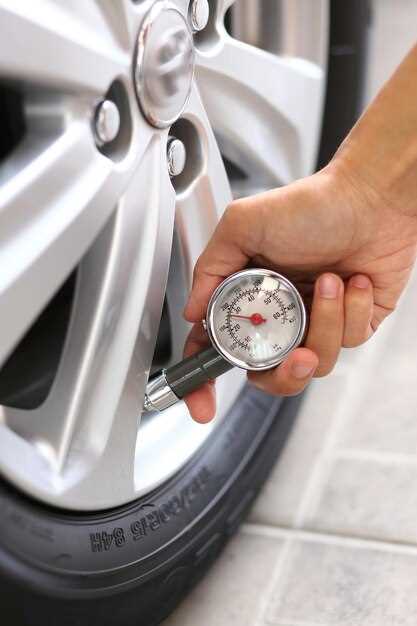
Proper tire maintenance is crucial for ensuring safety and performance, especially when navigating challenging terrains. Changes in temperature and environmental conditions can significantly affect tire pressure, making it essential for drivers to remain vigilant. Understanding how varying weather influences tire pressure can prevent potential hazards on the road.
In harsh weather conditions, such as extreme cold or intense heat, tire pressure can fluctuate dramatically. Cold temperatures typically lead to a decrease in tire pressure, while heat can cause it to rise. Neglecting to monitor and adjust tire pressure in these conditions can lead to reduced traction, increased tire wear, and compromised handling, particularly on uneven or difficult terrains.
Moreover, maintaining the correct tire pressure not only enhances vehicle performance but also improves fuel efficiency, which is vital during prolonged travels in unpredictable weather. Drivers must equip themselves with the knowledge and tools to regularly check and maintain tire pressure as part of their essential vehicle upkeep, ensuring safer journeys ahead.
Adjusting Tire Pressure for Extreme Cold Temperatures
In extreme cold temperatures, maintaining the correct tire pressure is crucial for vehicle performance and safety. As temperatures drop, the air inside tires contracts, which can lead to a decrease in tire pressure by approximately 1 PSI (pound per square inch) for every 10°F drop in temperature. Thus, regular monitoring and adjustment of tire pressure is essential when driving in cold weather.
Before venturing onto icy terrain, check the vehicle manufacturer’s recommended tire pressure, often found on a sticker inside the driver’s door or in the owner’s manual. It is advisable to inflate tires to the recommended pressure before heading out, as under-inflated tires can compromise traction, cause uneven tire wear, and increase the risk of tire blowouts on slippery surfaces.
When adjusting tire pressure in frigid conditions, allow the tires to warm up slightly, as driving for a short distance can help establish a more accurate reading. Once the tires have been adjusted, ensure to recheck the pressure after a few hours in the cold, as temperatures can fluctuate rapidly and impact the pressure once again. Keeping a portable tire pressure gauge in your vehicle can help maintain optimal tire pressure throughout winter months.
In summary, regular tire pressure adjustments during extreme cold can significantly enhance vehicle safety and improve driving performance on treacherous terrains. By staying vigilant and proactive about tire maintenance, you can enjoy a safer and more efficient driving experience throughout the winter season.
Adapting Tire Pressure for Off-Road Terrain Challenges

Off-road driving presents unique challenges that require careful consideration of tire pressure to optimize traction and control. When navigating rocky, muddy, or sandy terrain, adjusting tire pressure can significantly improve performance and safety. Lowering tire pressure allows tires to expand, increasing the contact patch with the ground. This larger surface area enhances grip, which is essential for driving over uneven or slippery surfaces.
In soft terrains, such as sand or mud, reducing pressure to around 15-20 psi can help the tire float on the surface rather than sinking. This prevents getting stuck and allows for better maneuverability. However, caution is necessary, as excessively low pressure can lead to tire damage or even dismounting from the rim.
Conversely, on rocky or hard-packed surfaces, maintaining a higher tire pressure, typically around 30-35 psi, ensures stability and reduces the risk of pinch flats. This pressure provides better responsiveness and control, essential for navigating complex obstacles. Understanding the specific terrain type and its conditions is crucial for determining the ideal tire pressure.
Always remember to adjust tire pressure back to recommended levels when transitioning back to paved roads. A consistent pressure check before and during off-road trips helps maintain optimal tire performance and prolongs tire life, ensuring a safer and more enjoyable adventure.
Monitoring Tire Pressure During Seasonal Weather Changes

Seasonal weather changes can significantly affect tire pressure, making it essential for drivers to monitor their tire conditions regularly. As temperatures drop in winter, the air inside tires contracts, leading to reduced pressure. Conversely, during hot summer months, the air expands, potentially increasing tire pressure beyond safe levels. Maintaining the correct tire pressure is crucial for optimal vehicle performance, safety, and fuel efficiency.
When driving on varied terrain through different seasons, the impact of external conditions on tire pressure becomes even more pronounced. For example, off-road driving in winter snow or muddy conditions can alter the effectiveness of tire grip if pressure levels are not appropriate. Likewise, navigating rocky or uneven terrain during warmer months requires proper tire inflation to ensure stability and minimize the risk of blowouts.
It is recommended to check tire pressure at least once a month and before embarking on longer trips, especially during seasonal transitions. Utilizing a reliable tire pressure gauge will provide accurate readings. Additionally, travelers should be mindful of changing atmospheric pressures and temperature fluctuations, which can occur rapidly in certain regions.
By staying vigilant and routinely checking tire pressure, drivers can better adapt to seasonal weather changes, ensuring optimal performance and safety on all types of terrain.




